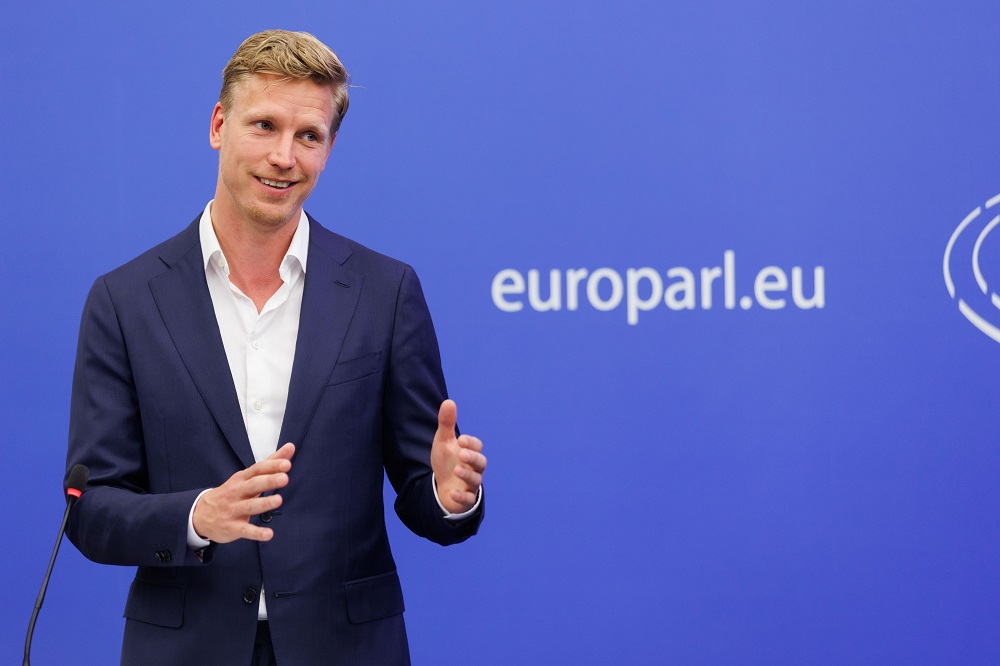Jan Huitema hopes that European Parliament can strike the right balance between functional and future-proof packaging, by ensuring policy framed around three core principles: reduce, reuse, and recycle.
Packaging is everywhere, and with good reason. Packaging protects our products, reduces spillage when using it and informs us about its contents. The flipside of packaging being so abundant is that waste is, too: the average European generates about 180 kilograms of packaging waste per year. Although the existence of waste - or rather ‘secondary materials’ - in itself is not so problematic, the ongoing extraction of natural resources is.
That is why the much-awaited revision of the Packaging and Packaging Waste Regulation (PPWR) should become a key building block for a European circular economy. Having been the Parliament’s rapporteur for the Circular Economy Action Plan own-initiative report, I hope that Parliament can strike the right balance between functional and future-proof packaging, by ensuring targeted policy action around three core circularity principles: reduce, reuse, and recycle.
 Jan Huitema MEP
Jan Huitema MEP
To start, we should tackle redundant packaging: the “low-hanging fruit”. For example, wine bottles in the Netherlands are, in the majority of the cases, excessively heavy. If their average weight would be reduced by just 100 grams, which is well above the lowest-weighing bottle, 48 million kg of glass could be saved, equivalent to 32.000 tonnes of CO2. At the same time, we should be wary of tunnel vision when it comes to ‘light weighting’. It could have detrimental consequences if it requires packaging to become more complex and harder to recycle. Balance is key, and the Commission should carefully, in consultation, figure out where sectors are able to reduce and how they can do so cost-effectively.
Allowing new recycling technologies to play a role in the supply of secondary materials where needed, could greatly benefit the sustainable production of (food grade) materials
For re-use, developing scalable solutions is essential. Although ambitious re-use targets are essential to reduce material extraction, targets should be attainable for both businesses and consumers. Imagine being a food service SME and shifting from re-usable packaging for take-away to re-usable containers and cutlery, which you will need to buy, re-collect and clean. All in all: a huge undertaking. In that light, new business models and infrastructure are urgently needed to make re-use solutions scalable and sustainable.
Finally, enabling innovation is key for the future of recycling. A good example is the growing shortage of food grade material, which is vital to protect vulnerable produce and cosmetics. Sourcing secondary food grade material is already a challenge but will become even harder as mandatory recycled content targets will increase.
Allowing new recycling technologies to play a role in the supply of secondary materials where needed, could greatly benefit the sustainable production of (food grade) materials and decrease our dependence on third countries for the import of such materials.
With the above in mind, I look forward to the Commission’s proposal for the PPWR to land in Parliament and to work on a fit-for-purpose sustainability framework for European packaging.
Jan Huitema (Renew, NL) is a member of the European Parliament’s committee on environment, public health, and food safety
The flexible packaging industry is working closely with sorting and recycling industries to improve European recycling rates to deliver true circularity says Guido Aufdemkamp
Waste prevention is the highest priority option within the EU waste hierarchy. Flexible packaging has been key to mitigating the generation of packaging waste at source, while providing appropriate protection for sensitive products, such as food, pharma, and cosmetics. The sector now wants to close the circularity gap with better and more recycling, upcoming policies can help make this a reality.
Flexible packaging is intrinsically linked to household staples and there is a good reason for this: it provides excellent protection against contamination and product spoilage, and keeps the food nutritious, fresh, and tasty for longer. Products can be delivered to consumers safely and properly, without losing their properties, bringing benefits of affordability and accessibility, while reducing risks of food waste.
 Guido Aufdemkamp, Executive Director, FPE
Guido Aufdemkamp, Executive Director, FPE
Half of all food products sold in the European retail market are using flexible packaging, while contributing only to 17 per cent of packaging waste generated. To put this in perspective, recent industry studies show that if all packaged food was using flexibles, annual food packaging waste could be reduced by 15 million tonnes within the EU, or in real terms, by more than two thirds.
There is more work to be done to become fully circular. The flexible packaging value chain has stepped up making flexible packaging synonymous with sustainability, both in terms of waste prevention and in recycling.
Flexible Packaging is designed to minimise the use of packaging materials such as plastics, paper or aluminium and provides a packaging-to-product weight ratio up to 5 to 10 times lower than alternatives with a significant lower environmental footprint. And ultimately this generates less packaging waste which needs to be collected, sorted, and recycled.
However, there is more work to be done to become fully circular. The flexible packaging value chain has stepped up making flexible packaging synonymous with sustainability, both in terms of waste prevention and in recycling.
The industry is very active to develop and introduce solutions which are easier to recycle with today’s infrastructure, without compromising on functionality. As flexible packaging is customised to the individual food product, these developments can take time to avoid unintended consequences such as increased product waste or environmental impact. The EU should not miss out on harmonising, upgrading, and expanding its waste management infrastructure to recycle more packaging and improve the quality of recycled material, which can then be used to replace virgin materials.
Increasing emphasis on the use of sustainable packaging solutions globally is expected to support demand for flexible packaging products over the coming ten years, driven by a combination of consumer concerns around carbon emissions, and an expanding food production to meet the growing population. In addition to playing a key role in delivering crucial products to consumers, flexible packaging is also an important industrial facilitator. The food industry also uses flexible packaging because it is a very cost-effective, and it has dedicated an entire filling infrastructure to flexible packaging.
The flexible packaging industry is working closely with sorting and recycling industries to improve European recycling rates to deliver true circularity, thus contributing further to society for a more sustainable consumption and production.
Guido Aufdemkamp is Executive Director of the Flexible Packaging Europe (FPE), the industry association representing the interests of more than 80 small, medium-sized companies, and multinational manufacturers with more than 350 sites in Europe.
Sign up to The Parliament's weekly newsletter
Every Friday our editorial team goes behind the headlines to offer insight and analysis on the key stories driving the EU agenda. Subscribe for free here.